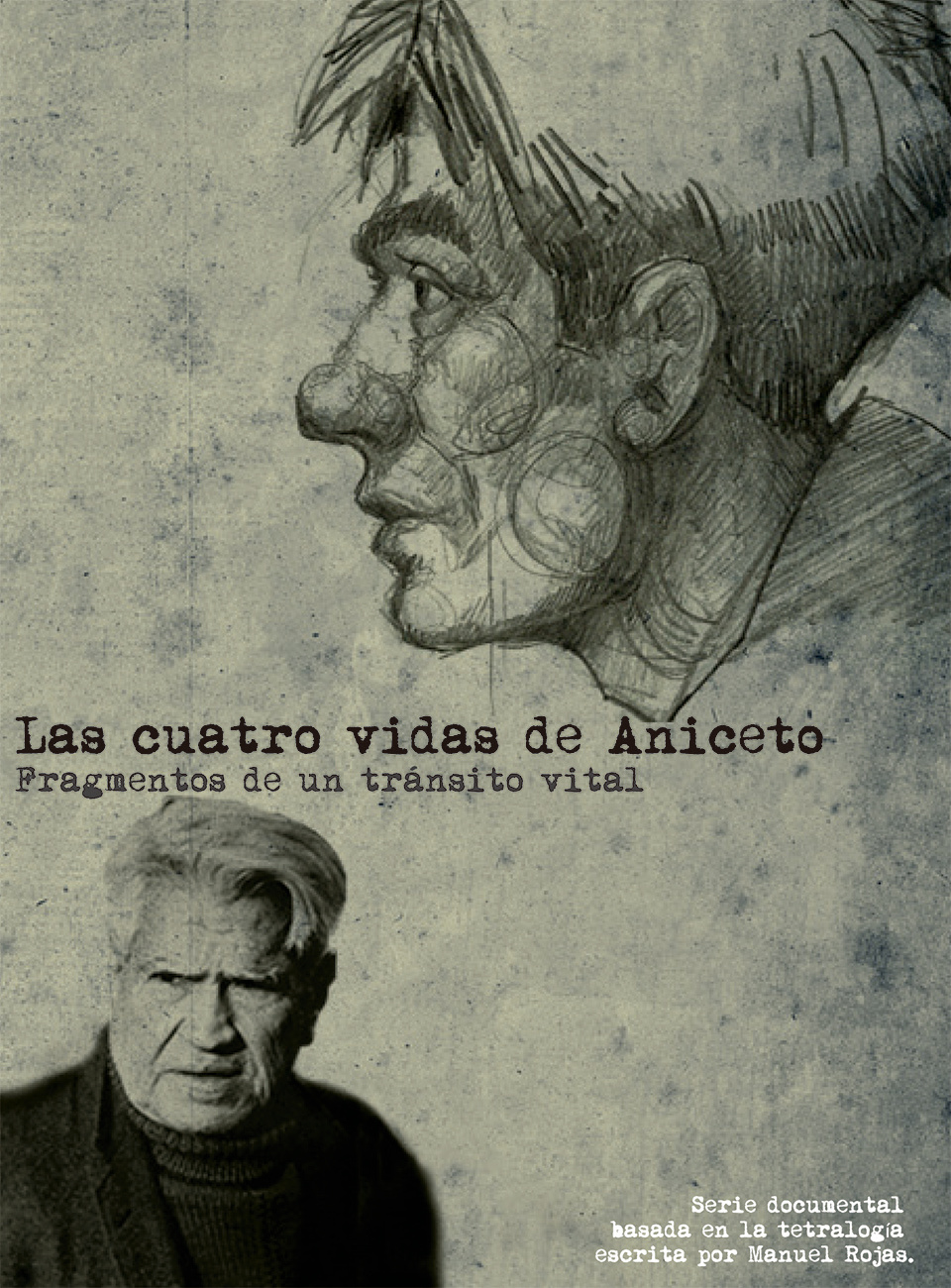[spa]
Aniceto Hevia es el protagonista de la más trascendental tetralogía de la historia de la literatura chilena: “Hijo de Ladrón” (1951), “Mejor que el vino” (1958), “Sombras contra el muro” (1958) y “La oscura vida radiante” (1971). La serie plantea una revisión y análisis sobre parte de la obra de Manuel Rojas -Premio Nacional de Literatura 1957-, tomando la voz de Aniceto, quien en estos cuatro libros experimenta diversas maduraciones en un tránsito vital sobre la vida.
[eng]
Aniceto Hevia is the protagonist of the most transcendental tetralogy in the history of Chilean literature: “Son of a Thief” (1951), “Better than wine” (1958), “Shadows against the wall” (1958) and “The dark radiant life” (1971). The series proposes a review and analysis of part of the work of Manuel Rojas -National Literature Prize 1957-, taking the voice of Aniceto, who in these four books experiences various maturations in a vital transition through life.

Vida 1: “Hijo de Ladrón”
“Sol y viento, mar y cielo” son las primeras frases que pronuncia Aniceto Hevia al salir por tercera vez de la cárcel y teniendo enfrente el puerto de Valparaíso. Es también el punto de arranque para que varios especialistas en diversas áreas del conocimiento pongan en activo un análisis desfragmentado -al igual que la novela-, sobre esta primera vida de Aniceto, a través de un azaroso viaje temporal donde los recuerdos de infancia fluyen junto a lágrimas, cuotas, una herida y un final enquistado en la memoria más pasada.
Vida 2: “Mejor que el vino”
Cercano a los 40 años, Aniceto es ahora un sujeto que ha cimentado las bases de una familia. Para los especialistas, esta institucionalización de dos libertarios como Aniceto y su propio autor, Manuel Rojas, no es contradictoria. Al primero, la muerte de su mujer lo ha llevado nuevamente en la búsqueda de otro amor. Para el segundo, es la consolidación de su proyecto literario. Este es el punto neurálgico de un análisis a través del amor libertario, el cuestionamiento a las instituciones y la familia.
Vida 3: “Sombras contra el muro”
Los especialistas se refieren a esta novela como una magistral manera de retratar el pensamiento ácrata a partir de las aventuras y desventuras de Aniceto y sus compañeros, tomando hechos reales e introduciendo ciertos intersticios de ficción. “Sombras contra el Muro” es el desarrollo del pensamiento político de Aniceto Hevia, junto a la aparición de una variada gama de personajes. La clave de la respuesta de este sugerente título no es más que una alusión a un sistema capitalista en plena vigencia.
Vida 4: “La oscura vida radiante”
La última novela de Manuel Rojas y también el cierre de la tetralogía. Su título es un oxímoron que plantea la reflexión de Aniceto, y de su propio autor, sobre la vida montada en un carrusel: de alegría y pena, de dolor y placer. A pesar de ser el último, el libro se instaura en un período en la vida de Hevia entre 1916 y 1920, aproximadamente. Los especialistas se refieren a ella como un caleidoscopio lleno de situaciones de viaje, amigos, chilenidad, política, amores y desamores. Es también la obra más contundente en la creación literaria de Manuel Rojas publicada a dos años de su muerte en 1973.
Life 1: “Son of a Thief”
“Sun and wind, sea and sky” are the first phrases that Aniceto Hevia utters when he leaves prison for the third time and has the port of Valparaíso in front of him. It is also the starting point for several specialists in various areas of knowledge to implement a defragmented analysis – like the novel – about this first life of Aniceto, through a chance time journey where childhood memories flow together. to tears, installments, a wound and an end entrenched in the most past memory.
Life 2: “Better than wine”
Close to 40 years old, Aniceto is now a guy who has laid the foundations of a family. For specialists, this institutionalization of two libertarians like Aniceto and its own author, Manuel Rojas, is not contradictory. For the first one, the death of his wife has led him once again in search of another love. For the second, it is the consolidation of his literary project. This is the neuralgic point of an analysis through libertarian love, the questioning of institutions and the family.
Life 3: “Shadows against the wall”
Specialists refer to this novel as a masterful way of portraying anarchist thinking based on the adventures and misadventures of Aniceto and his companions, taking real events and introducing certain fictional interstices. “Shadows against the Wall” is the development of Aniceto Hevia’s political thought, along with the appearance of a varied range of characters. The key to the answer to this suggestive title is nothing more than an allusion to a capitalist system in full force.
Life 4: “The dark radiant life”
The last novel by Manuel Rojas and also the closing of the tetralogy. Its title is an oxymoron that raises the reflection of Aniceto, and of its own author, on life riding a carousel: of joy and sorrow, of pain and pleasure. Despite being the last, the book is set in a period in Hevia’s life between approximately 1916 and 1920. Specialists refer to it as a kaleidoscope full of travel situations, friends, Chileanness, politics, loves and heartbreaks. It is also the most compelling work in the literary creation of Manuel Rojas published two years after his death in 1973.
Realización: Patricio Muñoz G.
Producción Ejecutiva: dereojo comunicaciones
Idea original: Christian Morales
Textos: Manuel Rojas
Producción general: Paulina Ferretti
Producción asociada: Claudio Leiva
Guion: Christian Morales
Producción periodística: David Guzmán
Dirección de Fotografía: Guillermo González
Voz: Manuel Rojas, José Soza
Montaje: Guillermo González, Patricio Muñoz
Post producción: Patricio Muñoz
Asesor de contenidos: Ignacio Álvarez, Jorge Guerra, Fundación Manuel Rojas
Sonido: Eduardo Tumayán
Cámara: Guillermo González, Patricio Muñoz, Juan Luis Tamayo
Dirección de arte: Instruccionesdeuso
Ilustraciones: Luis Martínez
Animaciones: Ezequiel Rojas
Asistencia de producción: Jimena Campos, Vanessa Alquinta, Annia Hidalgo
Agradecimientos: Familia de Manuel Rojas, Jaime Abarca, Cecilia Vicuña, Pedro Chaskel, Silvia Donoso
[spa]
Aniceto Hevia es el protagonista de la más trascendental tetralogía de la historia de la literatura chilena: “Hijo de Ladrón” (1951), “Mejor que el vino” (1958), “Sombras contra el muro” (1958) y “La oscura vida radiante” (1971). La serie plantea una revisión y análisis sobre parte de la obra de Manuel Rojas -Premio Nacional de Literatura 1957-, tomando la voz de Aniceto, quien en estos cuatro libros experimenta diversas maduraciones en un tránsito vital sobre la vida.
[eng]
Aniceto Hevia is the protagonist of the most transcendental tetralogy in the history of Chilean literature: “Son of a Thief” (1951), “Better than wine” (1958), “Shadows against the wall” (1958) and “The dark radiant life” (1971). The series proposes a review and analysis of part of the work of Manuel Rojas -National Literature Prize 1957-, taking the voice of Aniceto, who in these four books experiences various maturations in a vital transition through life.

[producción ejecutiva]
[producción]
[dirección de fotografía]
[guión]
[montaje]
[sonido]
[asesoría]
[financia]
[premios]

valparaíso

valparaíso